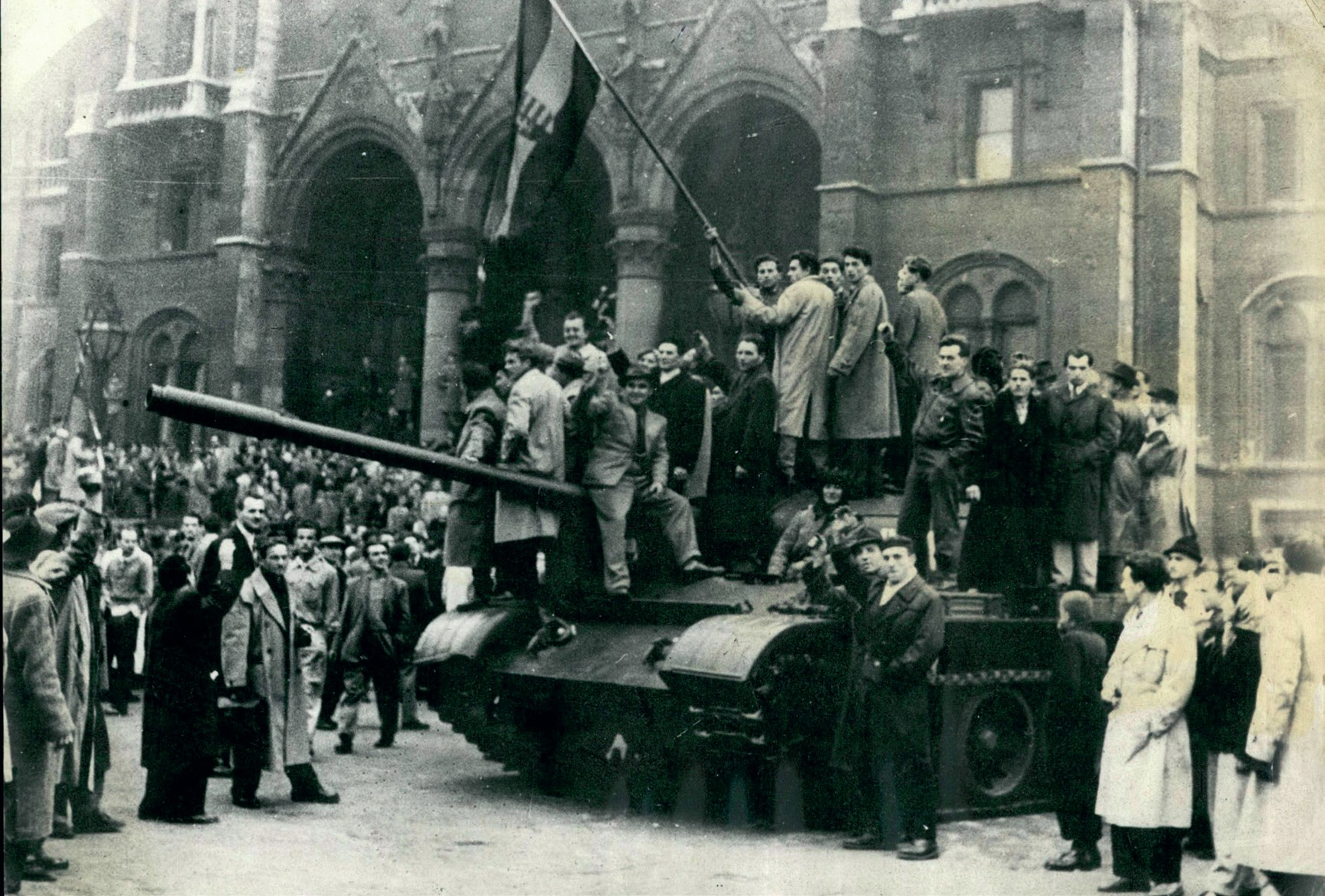
Hungary had ‘elected’ a Communist government in 1949 during the Soviet takeover of Eastern Europe following the end of the Second World War. The leader was Mátyás Rákosi, who modelled himself on Stalin. Under Rákosi, about a quarter of a million Hungarians were arrested by the Államvédelmi Hatóság (AVH), the State Protection Authority. As well as facing internal terror from the AVH, Hungarians suffered from government policies which prioritised industrialisation and military spending. The death of Stalin and Khrushchev’s ‘Secret Speech’ led directly to the Hungarian Revolt. Universities had been tightly controlled by the AVH, but in 1956 student groups formed and began to articulate demands for change.
The initial stages of the revolt appeared to be successful. Between 23 and 27 October students led huge crowds in demanding change, capturing key public buildings in Budapest as well as the radio station and bringing down the enormous 10-metre high statue of Stalin in the city centre. Rákosi fled to Moscow and Soviet troops in Budapest did not interfere with the actions of the Hungarian citizens. The new leader, Imre Nagy, dissolved the AVH, abolished one-party restrictions and promised free elections and the end of Soviet-style economic policies.
Your organisation does not have access to this article.
Sign up today to give your students the edge they need to achieve their best grades with subject expertise
Subscribe



